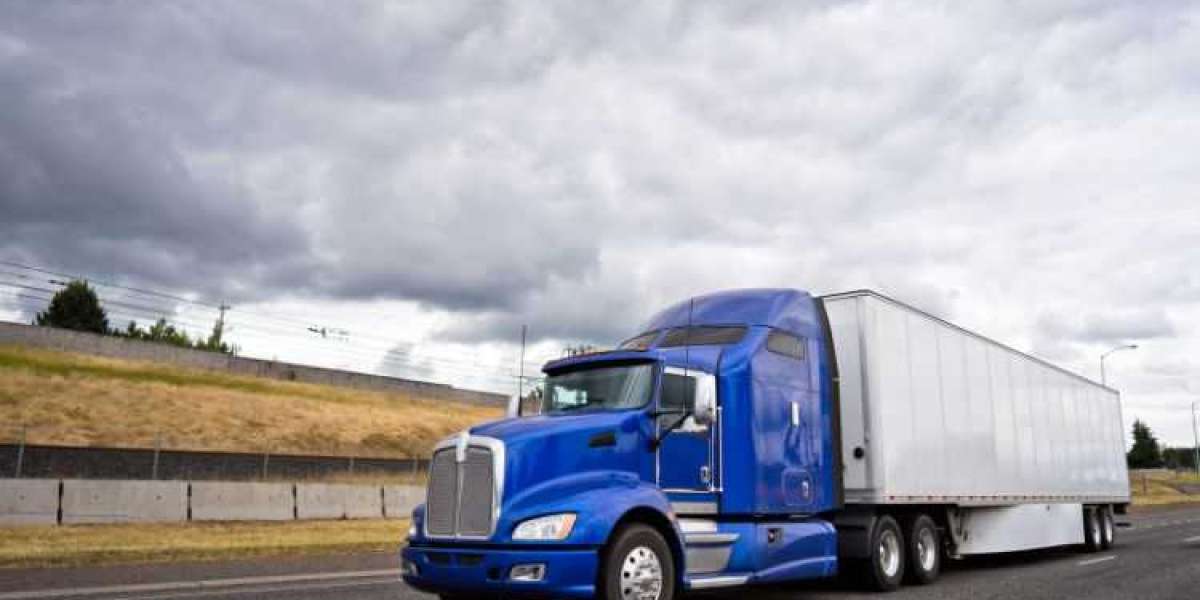The global semi-trailer market size is expected to grow at a CAGR of 5.6% during the forecast period of 2024-2032. As the backbone of logistics and transportation, semi-trailers play a crucial role in the efficient movement of goods across various industries. This blog post delves into the various facets of the semi-trailer market, including its size, share, growth prospects, and key segments, providing a comprehensive overview for industry stakeholders.
Market Overview
Semi-trailers are non-motorized vehicles that rely on a tractor unit for mobility. They are indispensable for transporting a wide range of goods, from automotive parts to refrigerated foods. The importance of semi-trailers in global trade cannot be overstated, as they enhance supply chain efficiency, reduce transportation costs, and facilitate just-in-time delivery.
However, the market faces challenges, including fluctuating fuel prices, stringent regulations, and the need for technological advancements. Despite these hurdles, the growth potential remains strong, driven by rising e-commerce activities, globalization of trade, and increasing demand for efficient logistics solutions.
Market Size and Share
As of 2023, the semi-trailer market has achieved significant size and is on the cusp of robust growth. The anticipated CAGR of 5.6% highlights a favorable outlook, suggesting that the market will expand substantially in the coming years. The growth will be driven by various segments, including trailer types, foot lengths, tonnage, and end-use industries.
Segment Analysis
By Type
Flat Bed Trailers Flat bed trailers are versatile and widely used for transporting large and heavy goods that don’t require enclosure. Their growth is primarily supported by sectors like construction and heavy machinery. The increasing demand for infrastructure development in emerging economies is expected to bolster this segment.
Dry Vans Known for their versatility, dry vans are used for transporting general cargo. With e-commerce booming, the demand for dry vans is surging. Companies are increasingly investing in these trailers to meet delivery timelines and enhance storage capacity.
Refrigerated Trailers As the demand for perishable goods continues to rise, refrigerated trailers are becoming increasingly vital. They are indispensable for the food and pharmaceutical sectors, where temperature control is crucial. The growth potential for this segment is strong, driven by consumer preferences for fresh produce and the expansion of the cold chain logistics market.
Lowboy Trailers Lowboy trailers are specialized for transporting oversized and heavy loads. The need for lowboys is expected to grow alongside infrastructure projects and industries requiring heavy machinery transport, such as mining and construction.
Tankers Tanker trailers are essential for transporting liquids, including chemicals and fuels. The rising chemical manufacturing sector and stringent safety regulations are expected to enhance the demand for tankers.
Others This category includes emerging trailer types that cater to niche markets, such as specialized equipment and technology-enhanced trailers.
By Foot Length
Up to 45 Foot Trailers in this category are popular for urban deliveries where maneuverability is a priority. They are increasingly favored by logistics companies due to their adaptability.
Above 45 Foot Longer trailers are preferred for bulk transportation over long distances. Their efficiency in carrying larger loads contributes to their growing demand in the market.
By Tonnage
Below 25 Ton Ideal for light to medium cargo, these trailers are widely used in local deliveries.
25-50 Ton This category is experiencing growth due to rising demands in manufacturing and retail sectors, where mid-range loads are common.
51-100 Ton Used primarily in heavy-duty applications, these trailers support industries such as construction and mining.
Above 100 Ton Specialized for ultra-heavy transport, this segment is driven by infrastructure development projects.
By End-Use
Automotive The automotive sector is a significant user of semi-trailers for transporting parts and finished vehicles. With the global automotive industry on the rise, this segment is expected to grow steadily.
Chemical The chemical industry relies heavily on specialized tankers for the safe transportation of hazardous materials. Compliance with regulatory standards is driving innovation in this segment.
Others This includes various sectors such as food and beverage, construction, and retail, all of which are seeing increased demand for efficient transport solutions.
Regional Analysis
The semi-trailer market's growth is not uniform across the globe. Key regions contributing to the market expansion include:
North America Home to some of the largest logistics companies, North America boasts a mature semi-trailer market. The region is expected to maintain its dominance due to advanced infrastructure and high freight demand.
Europe The European market is witnessing growth due to stringent emission regulations that encourage the adoption of innovative trailer technologies. The rise in e-commerce is also fueling demand.
Asia-Pacific The Asia-Pacific region is projected to grow the fastest, driven by rapid industrialization, increasing trade activities, and investments in infrastructure.
Latin America and Middle East Africa While these regions are still developing their logistics capabilities, increasing economic activities are expected to propel the semi-trailer market forward.
Competitive Landscape
The semi-trailer market is characterized by intense competition among key players, including manufacturers and suppliers. Major companies are focusing on product innovation, mergers, and acquisitions to strengthen their market position. Recent trends include the development of lightweight materials, advanced safety features, and the integration of technology for better tracking and efficiency.
Future Outlook and Forecast (2024-2032)
The future of the semi-trailer market appears bright, with a projected CAGR of 5.6% over the next decade. Several trends are expected to shape the market:
- Sustainability: With increasing pressure to reduce carbon footprints, manufacturers are likely to invest in eco-friendly trailers and practices.
- Technological Advancements: Innovations such as telematics, automated driving systems, and electric trailers will play a significant role in shaping future transport solutions.
- Changing Consumer Preferences: The rise of e-commerce and shifting consumer expectations for faster deliveries will continue to drive demand for various trailer types.


